The content of the article
Of course, knowing the symptoms of all diseases is quite difficult, even if you are a doctor. Doctors get a profession for a very long time, over the years studying various pathologies and diseases. However, a simple person should know the basics of physiology and first aid. Today we’ll talk about a stroke in men - how it manifests itself, what symptoms are characteristic for this, what are the first signs of a diagnosis. After all, this is very important, timely medical care for a stroke can save a person from disability and even death.
What is a stroke?
A stroke is an acute condition in which the blood circulation of the brain is briefly disturbed due to neurological pathologies that have arisen. A stroke develops very quickly, within a few hours, the pathology can lead to death or disability if you do not provide medical assistance in time. According to statistics, stroke is the second most common cause of mortality. It is a stroke that is most often the reason that a person becomes disabled and cannot take care of himself. A third of all patients with stroke die immediately, on the first day after the onset of the disease due to untimely access to a doctor. More than half of people die in the first year after a stroke. It is noteworthy that men are more susceptible to stroke, they die more often after a previous pathology. But why does the disease develop?
Causes of stroke in men
There are three types of stroke, each of which has its own characteristics and causes of development.
Ischemic stroke, or cerebral infarction. This type of stroke is most often diagnosed, in 80% of cases. A brain lesion develops suddenly, it can occur even at night in a sleeping person. Usually older people are subject to ischemic stroke, but sometimes a blow can happen in a young person, in rare cases, even in a child. Risk factors for the development of ischemic stroke are smoking, drinking alcohol, stress, a sedentary lifestyle, high cholesterol, blood clotting, obesity, poor nutrition, etc. The risk of developing a stroke is increased if the patient has a history of diagnoses such as diabetes mellitus, heart defects, hypertension, myocardial infarction. Ischemic stroke develops as a result of narrowing or blockage of the arteries that feed the brain. The cause of a stroke often becomes a detached blood clot, which blocks the supply of blood and oxygen to the brain cells, when they starve, they gradually begin to die.
Hemorrhagic stroke, or cerebral hemorrhage. This type of stroke develops much less frequently, in only about 15% of cases. The principle of pathology is the rupture of a blood vessel, resulting in the release of blood into the cerebral fluid. Plasma and red blood cells penetrate the structure of the brain fluid and affect brain function. The vessel may burst due to severe vitamin deficiency, high blood pressure, severe intoxication. Often, cerebral hemorrhage occurs against a background of strong physical or emotional stress, with powerful stresses and neurological experiences.
Subarachnoid stroke develops only in 5% of cases, most often it is caused by a head injury or rupture of an aneurysm. With a head injury, blood vessels are damaged, leading to cerebral hemorrhage. Aneurysm rupture may be due to various blood diseases or drug use.
A severe migraine attack can also trigger a stroke, in which there is a vasospasm and an overflow of the venous artery.Knowing the types of stroke and the reasons for their development, you can reduce the risks if possible. But how to recognize a stroke in the early stages of a lesion?
Signs of a stroke
All doctors unanimously say that when the first symptoms of a stroke occur, a person, his relatives and just people around him have the treasured three hours, during which you need to have time to seek help. After these three hours, the changes in the brain will be irreversible, so everyone should know the first signs of a stroke in men.
Even before a stroke occurs, a person may suffer a headache that cannot be treated. That is, conventional analgesics (paracetamol, ibuprofen) do not help.
A man develops an unreasonable weakness, general health worsens, a pressing headache appears, dizziness can lead to loss of consciousness. Most often, the patient is in a fainting state, may not respond to external stimuli.
The victim may experience nausea and vomiting; they are not related to eating. Nausea can appear on either a full or an empty stomach. In some cases, active non-stop vomiting develops, which does not bring relief.
If you suspect a stroke, you need to take something in your hands, try to thread a needle, cook food (be careful with a knife and hot objects). If the brain is damaged, the coordination of movement will be impaired, in a man everything will fall out of his hands. You can simply raise your hands one level - the hand on the affected side of the body will be located lower.
With a stroke, speech may be disturbed, and not constantly, but at times. Try to talk with loved ones, recite a verse, or just read aloud. This will help you recognize violations in time. If you notice a person with signs of a stroke, ask for his full name and address. The victim’s speech will be blurred, as if under the influence of alcohol. Unfortunately, this very reason often leads to the fact that passers-by do not provide first aid to stroke victims - they think that a person is simply drunk.
In the case of a hemorrhagic stroke, a man can feel a rush of blood to his head, due to this there is a fever, his face can turn red and even purple.
With a stroke, the facial expression of a man changes - ask him to smile. If you suspect a stroke at home - go to the mirror and try to smile. When the brain is damaged, the nerve endings are not obeyed, one corner of the lips can be omitted, the smile will turn out asymmetric.
There is another way to recognize a stroke. At the mirror, try to pull your tongue out of your mouth - during a stroke it will be asymmetric, it will fall on one side. In difficult cases, you can’t even pull your tongue out of your mouth - your muscles won’t obey.
In some people, one of the first signs of a stroke is pain in the arm or numbness of the fingers. Ambulance doctors often check the patient's condition with simple handshakes - with the right and left hand. In a stroke, the arm on the affected side of the body will be much weaker.
A stroke can be characterized by signs such as a violation of swallowing, active salivation. In complex cases with a stroke, the pulse decreases, uncontrolled urination, defecation may appear. On the affected side, the eyelid becomes more lowered, the cheek is not rounded when inflated.
Most stroke patients admit that the first symptom was a sharp and severe blow to the head or the so-called “boiling water in the head” - a feeling of heat. If such symptoms occur, you should immediately call an ambulance.
As noted, men suffer from stroke much more often, especially when it comes to young age. It's all about female sex hormones that protect the body from the malfunctioning of blood vessels.Over time, when a woman crosses the climacteric age, the production of hormones decreases, the frequency of the disease is compared with the male. That is why in men the disease can occur at any age, women mainly suffer from a stroke only after 50-60 years. Despite the features of the course of a stroke in a woman and a man, everyone, without exception, in such a situation needs first aid.
First aid for stroke
If at least one or more symptoms occur, you need to call an ambulance team as soon as possible. During the call, be sure to inform the dispatcher about the symptoms of pathology and assumptions about the diagnosis. While doctors are coming to you, you can give a person first aid.
- Place the patient on a horizontal surface, raise your head with a pillow or folded clothes under it. By the way, you need to lift not only the head, but also the shoulders, so as not to disturb the blood circulation in the vertebral arteries. Do not let the patient move or get up - this can worsen the course of the stroke and lead to more serious consequences.
- If the patient has tight clothing, they should be relaxed - unfasten the collar of the shirt, remove the belt, loosen the tie. A person should breathe calmly and easily.
- With nausea and vomiting, you need to put the patient on his side, put a cup or another wide container for vomit near him.
- Try to measure the patient’s pressure, if it exceeds 140/90, you need to lower it. As a rule, hypertensive patients always have medications for lowering their pressure - Nifedipine, Clonidine, Captopril, Anaprilin, Egilok. If in doubt, it is better to wait for a doctor or ask the ambulance manager!
- If there is no suitable cure for high blood pressure at hand, apply cold to your head and warm your feet. Wrap ice or ice cream meat, attach to the forehead. Put warm (not hot!) Water into the bottles and attach to the victim's feet.
- If the patient's breathing is impaired or he stops breathing at all, he needs to do artificial mouth-to-mouth breathing. To do this, the victim’s head leans back slightly, the nostrils are pinched, and air is blown into the mouth for about 1 second. During inspiration, the chest should be elevated. Take a breath every 2-3 seconds.
- If the patient is conscious, try to calm him down. If he himself does not suspect a stroke, he should not talk to him about the alleged diagnosis, this may affect his nervous system. If glycine is at hand - fine, it will help relieve stress, has a mild sedative and neuroprotective effect, and does not allow the focus of a stroke to grow. In addition, glycine is absolutely safe. Just give the patient under the tongue 10 tablets of the drug. But remember, this is permissible only if the victim is conscious, otherwise he may choke.
It is difficult to make a prognosis after a stroke, especially in old age. Rehabilitation is a long way that will require a lot of time and patience. Recovery of lost brain functions can occur due to alternative ways of blood supply to the brain, so there is always a chance of recovery, especially in the absence of additional diseases. It is important to prevent a second stroke, which can be fatal.
If you have any vascular or cardiac pathologies, blood diseases - you need to carry a note with the address and phone number of loved ones who may come to the rescue. Take care of your elderly relatives - put a note in the pockets of all your outerwear, make sure that the person drinks the prescribed medicine on time, abandons bad habits and consults a doctor in a timely manner. Even if nothing bothers, after 60 years, you need to do a cardiogram every year and go to a cardiologist for a consultation. And then the stroke will certainly bypass you!
Video: How to Recognize a Stroke

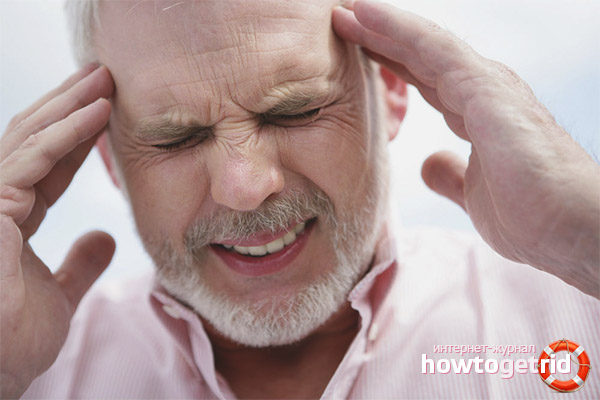
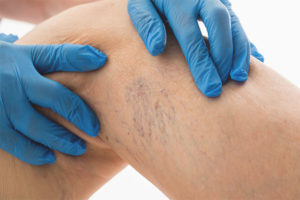
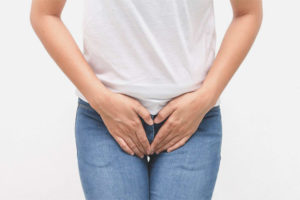
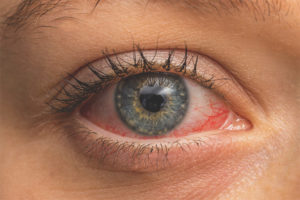

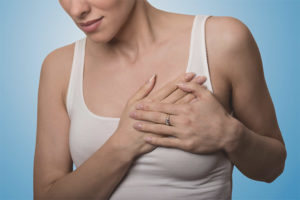



Submit